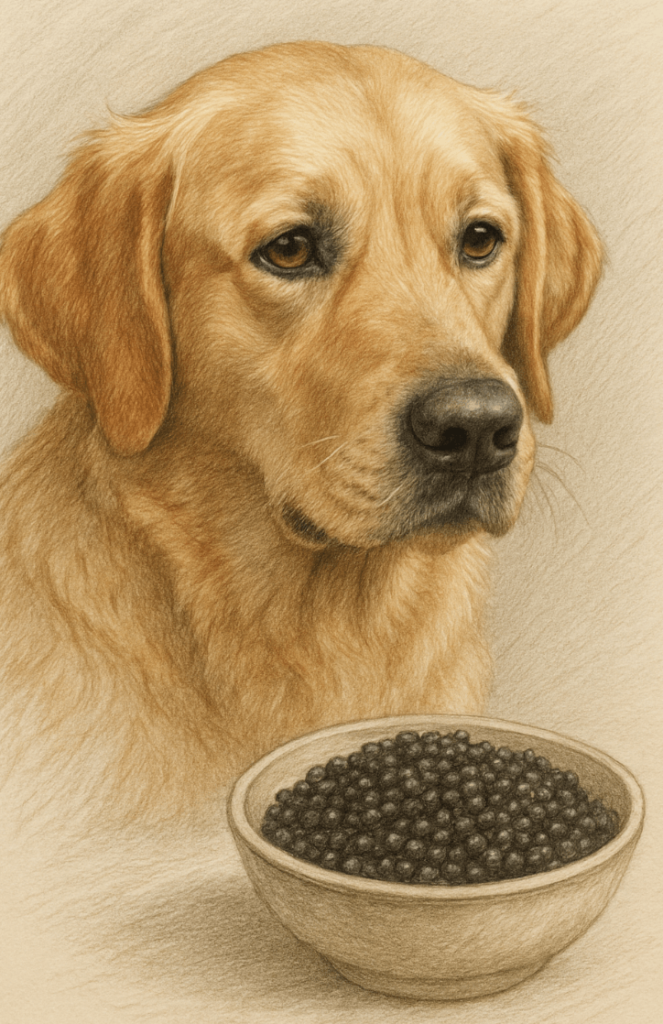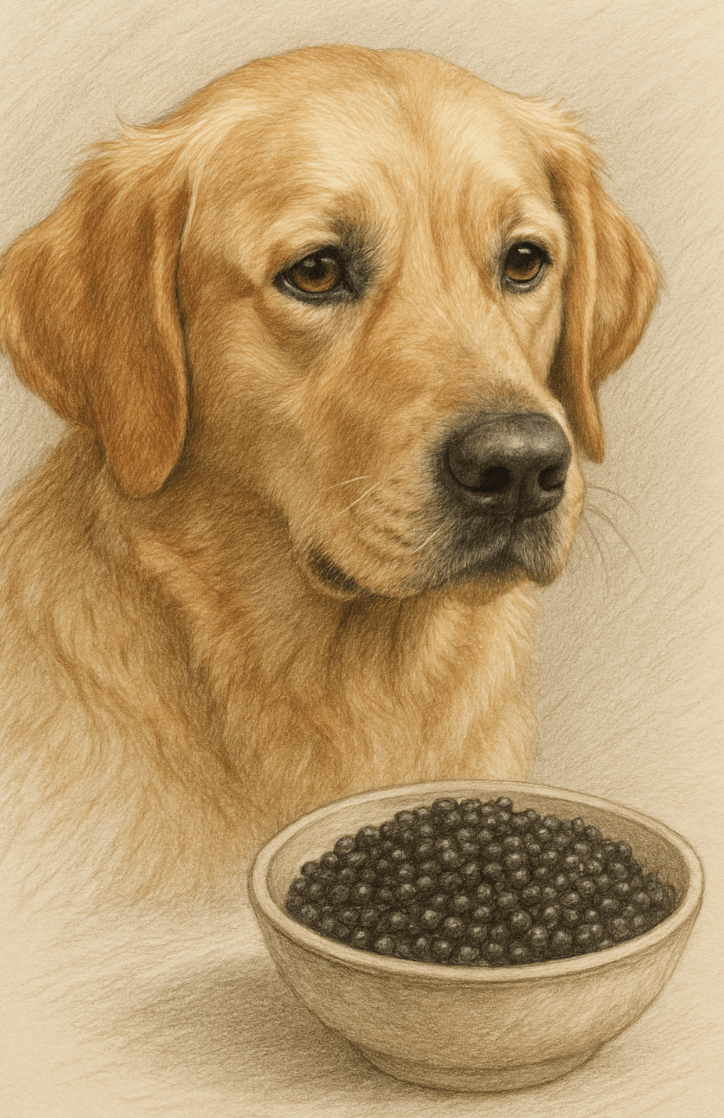Can Dogs Eat Caviar?
Caviar, often considered a luxury food for humans, is rich in nutrients and flavor. But when it comes to our canine companions, many pet owners wonder whether this delicacy is safe or even beneficial for dogs. While some foods that are safe for humans can pose risks to dogs, others may offer surprising health benefits when given in moderation. In this blog post, we’ll explore whether dogs can eat caviar, the potential risks and benefits, and how to introduce it safely into their diet. Whether you’re curious about treating your pup to something special or simply want to ensure their safety, this guide will provide all the information you need.
Potential Risks of Feeding Caviar to Dogs
While caviar isn’t inherently toxic to dogs, it does come with certain risks that every pet owner should consider before offering it as a treat.
High Salt Content:
Caviar is often heavily salted, which can lead to dehydration or sodium ion poisoning in dogs if consumed in large quantities.Rich Fat Content:
The high fat content in caviar may upset your dog’s stomach or contribute to pancreatitis, especially in dogs prone to digestive issues.Allergic Reactions:
Some dogs may have sensitivities or allergies to fish products, leading to symptoms like itching, vomiting, or diarrhea.Choking Hazard:
The texture of caviar eggs could pose a choking risk if not properly prepared or served in large amounts at once.Mercury and Contaminants:
Fish-based products like caviar may contain traces of mercury or other contaminants, which can be harmful over time.
Understanding these risks ensures you make an informed decision about whether caviar is appropriate for your dog.
Potential Benefits of Caviar for Dogs
Despite the risks, caviar can offer some nutritional benefits for dogs when fed sparingly and under supervision.
Omega-3 Fatty Acids:
Caviar is packed with omega-3s, which support skin health, reduce inflammation, and promote a shiny coat.Protein-Rich Snack:
High-quality protein in caviar supports muscle development and overall energy levels in active dogs.Vitamins and Minerals:
Caviar contains essential nutrients like vitamin D, selenium, and magnesium, which contribute to bone health and immune function.Joint Health Support:
Omega-3 fatty acids also help maintain joint flexibility, making caviar potentially beneficial for senior dogs or those with arthritis.Healthy Treat Option (in Moderation):
When given occasionally, caviar can serve as a unique and nutritious addition to your dog’s diet.
These benefits highlight why some pet owners choose caviar as an occasional indulgence, but moderation is key.
Check this guide 👉Can Dogs Eat Brisket? Best 7 Expert Tips!
Check this guide 👉Can Dogs Eat Mackerel? Best 7 Expert Tips!
Check this guide 👉Can Dogs Eat Pastrami? Best 7 Expert Tips!

Safe Alternatives to Caviar | Risks of Unsafe Foods for Dogs |
|---|---|
Salmon oil supplements | Grapes and raisins (toxic to kidneys) |
Cooked, plain fish (low-sodium) | Chocolate (contains theobromine) |
Lean meats (chicken, turkey) | Onions and garlic (damage red blood cells) |
Pumpkin puree | Avocado (persin toxicity in large doses) |
Blueberries | Alcohol (severe toxicity) |
How to Safely Introduce Caviar to Your Dog’s Diet
If you decide to give your dog caviar, it’s important to proceed cautiously to minimize risks and ensure their safety.
Choose Low-Sodium Options:
Opt for unsalted or low-sodium varieties to avoid overwhelming your dog’s system with excess salt.Start with Small Portions:
Begin by offering just a tiny taste to monitor your dog’s reaction and prevent digestive upset.Observe for Allergies:
Watch for signs of allergic reactions such as swelling, hives, or gastrointestinal distress after feeding.Avoid Flavored Varieties:
Skip caviar mixed with spices, oils, or additives that could irritate your dog’s stomach or cause harm.Consult Your Veterinarian:
Always seek professional advice before introducing new foods, especially ones as unconventional as caviar.
Following these guidelines helps ensure a safe and enjoyable experience for your dog.
Signs Your Dog May Have Eaten Too Much Caviar
Even small amounts of caviar can cause problems if your dog has underlying health conditions or consumes too much too quickly. Look out for these warning signs.
Excessive Thirst or Urination:
These symptoms may indicate sodium ion poisoning caused by the high salt content in caviar.Vomiting or Diarrhea:
Digestive upset is common after consuming rich or unfamiliar foods like caviar.Lethargy or Weakness:
A sudden lack of energy could signal dehydration or an adverse reaction to the food.Swelling or Itching:
Allergic reactions may manifest as facial swelling, redness, or persistent scratching.Difficulty Breathing:
Severe reactions, though rare, require immediate veterinary attention to prevent complications.
Recognizing these signs early allows you to act quickly and protect your dog’s health.
Common Mistakes to Avoid When Feeding Caviar to Dogs
Feeding caviar to your dog requires careful consideration to avoid mistakes that could jeopardize their health. Here are some pitfalls to watch out for.
Overfeeding:
Giving too much caviar at once can overwhelm your dog’s system and lead to digestive issues.Ignoring Ingredient Labels:
Failing to check labels for added salts, spices, or preservatives increases the risk of adverse reactions.Skipping Veterinary Advice:
Introducing new foods without consulting your vet can result in unexpected complications.Mixing with Other Unsafe Foods:
Combining caviar with toxic ingredients like onions or garlic compounds the danger.Assuming All Dogs React the Same Way:
Every dog is different; what works for one may not suit another, so individual tolerance matters.
Avoiding these mistakes ensures a safer and healthier experience for your dog.
Alternatives That Offer Similar Benefits to Caviar
If you’re hesitant about feeding caviar, there are plenty of alternatives that provide similar nutritional benefits without the associated risks.
Salmon Oil Supplements:
Rich in omega-3 fatty acids, salmon oil supports skin, coat, and joint health without the salt or fat content of caviar.Cooked Plain Fish:
Low-sodium options like baked salmon or cod deliver protein and omega-3s in a safer format.Egg Yolks:
Packed with vitamins and healthy fats, egg yolks are a budget-friendly alternative to caviar.Flaxseed Oil:
Plant-based flaxseed oil provides omega-3s and can be added to your dog’s meals for extra nutrition.Lean Meats:
Chicken, turkey, or beef offer high-quality protein and essential nutrients without the luxury price tag.
These alternatives allow you to cater to your dog’s dietary needs while keeping them safe.
Understanding Your Dog’s Nutritional Needs
Before introducing any new food, including caviar, it’s crucial to understand your dog’s specific nutritional requirements. This knowledge helps you make informed choices that align with their health goals.
Age Considerations:
Puppies, adults, and seniors have different dietary needs based on their growth stage and activity level.Breed Size Differences:
Larger breeds may tolerate richer foods better than smaller breeds, who are more susceptible to digestive issues.Health Conditions:
Dogs with chronic illnesses like kidney disease or obesity require carefully tailored diets to manage their conditions.Activity Levels:
Highly active dogs benefit from nutrient-dense foods, while sedentary dogs need lower-calorie options to prevent weight gain.Food Sensitivities:
Identifying and avoiding allergens ensures your dog stays comfortable and free from adverse reactions.
By considering these factors, you can create a balanced diet that keeps your dog thriving.
Frequently Asked Questions About Dogs and Caviar
Is caviar safe for all dogs?
No, caviar is best suited for healthy adult dogs without dietary restrictions or sensitivities.
How much caviar can I give my dog?
Limit portions to a teaspoon or less, depending on your dog’s size, and only offer it occasionally.
Can puppies eat caviar?
Puppies should avoid caviar due to their sensitive digestive systems and developing nutritional needs.
What type of caviar is safest for dogs?
Unsalted or low-sodium fish roe is the safest option; avoid flavored or heavily processed varieties.
What should I do if my dog eats too much caviar?
Contact your veterinarian immediately for advice tailored to your dog’s condition.
Making Smart Choices for Your Dog’s Diet
Feeding caviar to your dog can be a fun and nutritious treat when done responsibly. However, it’s essential to weigh the potential risks against the benefits and always prioritize your dog’s health and well-being. By understanding their unique dietary needs and consulting with your veterinarian, you can ensure your furry friend enjoys a balanced and safe diet. Remember, moderation and mindfulness are key—your dog doesn’t need luxury foods to feel loved. With proper care and attention, you can keep your pup happy, healthy, and thriving.
Canned Pumpkin for Cat Diarrhea: Best 7 Expert Tips! Natural remedy to firm stools, soothe upset bellies, and support gut health safely.
Can a Cat Give You Scabies? Best 7 Expert Tips! Discover the truth about feline mites, human skin risks, and how to protect yourself—without panic.
Cat Flea vs Human Flea: Best 7 Expert Tips! Discover the truth about bites, species, and how to eliminate infestations for good.
Weird Cat Behaviors: Best 7 Expert Tips! Discover why cats do strange things—and how to understand, not punish, their instincts for a happier home.





